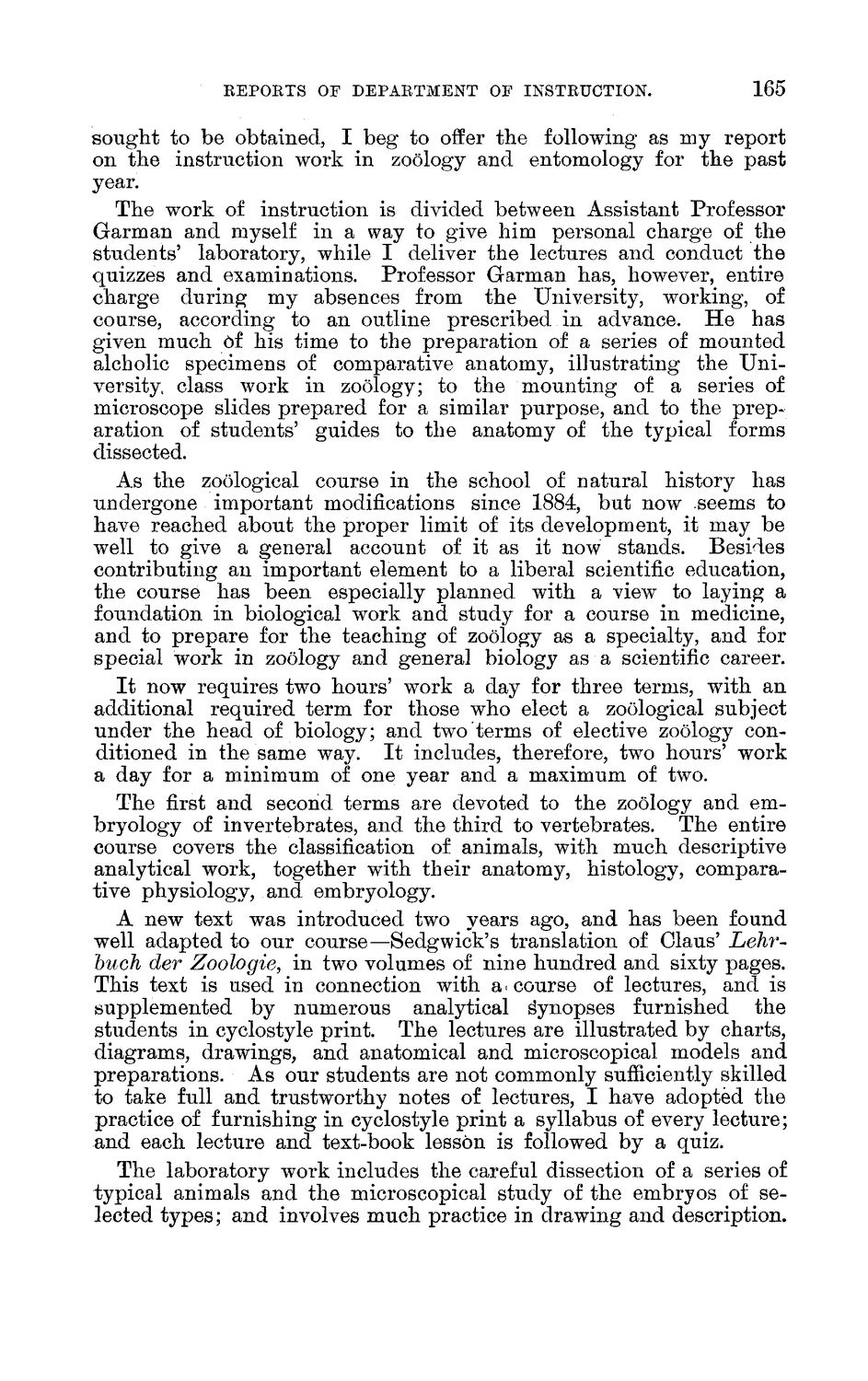| |
| |
Caption: Board of Trustees Minutes - 1888
This is a reduced-resolution page image for fast online browsing.

EXTRACTED TEXT FROM PAGE:
REPORTS OF DEPARTMENT OF INSTRUCTION. 165 sought to be obtained, I beg to offer the following as my report on the instruction work in zoology and entomology for the past year. The work of instruction is divided between Assistant Professor Garman and myself in a way to give him personal charge of the students' laboratory, while I deliver the lectures and conduct the quizzes and examinations. Professor Garman has, however, entire charge during my absences from the University, working, of course, according to an outline prescribed in advance. He has given much of his time to the preparation of a series of mounted alcholic specimens of comparative anatomy, illustrating the University class work in zoology; to the mounting of a series of microscope slides prepared for a similar purpose, and to the preparation of students' guides to the anatomy of the typical forms dissected. As the zoological course in the school of natural history has undergone important modifications since 1884, but now seems to have reached about the proper limit of its development, it may be well to give a general account of it as it now stands. Besides contributing an important element fco a liberal scientific education, the course has been especially planned with a view to laying a foundation in biological work and study for a course in medicine, and to prepare for the teaching of zoology as a specialty, and for special work in zoology and general biology as a scientific career. I t now requires two hours' work a day for three terms, with an additional required term for those who elect a zoological subject under the head of biology; and two terms of elective zoology conditioned in the same way. I t includes, therefore, two hours' work a day for a minimum of one year and a maximum of two. The first and second terms are devoted to the zoology and embryology of invertebrates, and the third to vertebrates. The entire course covers the classification of animals, with much descriptive analytical work, together with their anatomy, histology, comparative physiology, and embryology. A new text was introduced two years ago, and has been found well adapted to our course—Sedgwick's translation of Claus' Lehrbuch der Zoologie, in two volumes of nine hundred and sixty pages. This text is used in connection with a. course of lectures, and is supplemented by numerous analytical Synopses furnished the students in cyclostyle print. The lectures are illustrated by charts, diagrams, drawings, and anatomical and microscopical models and preparations. As our students are not commonly sufficiently skilled to take full and trustworthy notes of lectures, I have adopted the practice of furnishing in cyclostyle print a syllabus of every lecture; and each lecture and text-book lesson is followed by a quiz. The laboratory work includes the careful dissection of a series of typical animals and the microscopical study of the embryos of selected types; and involves much practice in drawing and description.
| |